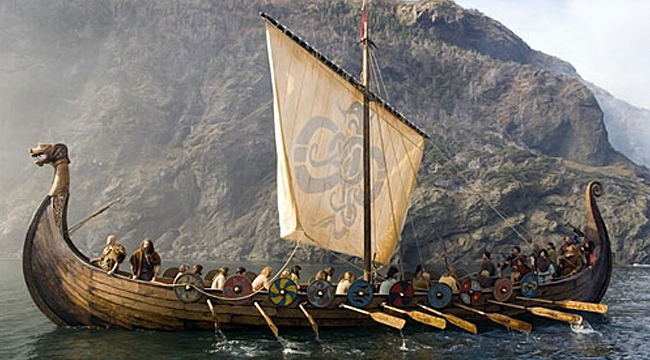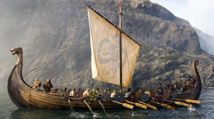The artefacts, many of them unique, include silver ingots, brooches and armbands, gold objects and items of Irish origin.
There was also a decorated solid silver Christian cross and a Carolingian silver pot which has not yet been emptied, from an area of modern-day Germany.
Derek McLennan, 47, found the treasure last month buried some 60 centimetres (23 inches) below the ground in Dumfriesshire, southwest Scotland.
The precise location is being kept a secret while authorities work to preserve the site and ensure no more buried treasure remains.
The haul was found in a field belonging to the Church of Scotland.
Retired businessman McLennan began metal detecting three years ago and the haul is his third outstanding find in a year, following two mediaeval coin hoards.
"It's certainly the most significant Viking hoard from Scotland," Stuart Campbell, head of the Treasure Trove Unit who is overseeing the handling of the find, told AFP.
"It is the biggest hoard of Viking material found in Scotland since the 19th century. It's hugely significant, not just for Britain but for western Europe because it's a very unusual hoard.
"It contains objects from all over Europe. There are amulets from Ireland, jewellery from Scandinavia, gold jewellery that is probably Anglo-Saxon, and there is the Carolingian silver vessel from what is now Germany," he said.
McLennan will receive a full finders' fee based on the treasure's market value when it is bought by a museum and has agreed to share the proceeds with the landowner, the Church of Scotland.
The pot alone could be worth around £200,000 ($320,000, 250,000 euros).
"We still don't know exactly what is in the pot, but I hope it could reveal who these artefacts belonged to, or at least where they came from," McLennan said.
Scotland's culture minister Fiona Hyslop said of the find: "The Vikings were well known for having raided these shores in the past, but today we can appreciate what they have left behind, with this wonderful addition to Scotland's cultural heritage.
"Their greatest value will be in what they can contribute to our understanding of life in early medieval Scotland, and what they tell us about the interaction between the different peoples in these islands at that time."
-------------------------------------------------------------------------------------------------------
There was also a decorated solid silver Christian cross and a Carolingian silver pot which has not yet been emptied, from an area of modern-day Germany.
Derek McLennan, 47, found the treasure last month buried some 60 centimetres (23 inches) below the ground in Dumfriesshire, southwest Scotland.
The precise location is being kept a secret while authorities work to preserve the site and ensure no more buried treasure remains.
The haul was found in a field belonging to the Church of Scotland.
Retired businessman McLennan began metal detecting three years ago and the haul is his third outstanding find in a year, following two mediaeval coin hoards.
"It's certainly the most significant Viking hoard from Scotland," Stuart Campbell, head of the Treasure Trove Unit who is overseeing the handling of the find, told AFP.
"It is the biggest hoard of Viking material found in Scotland since the 19th century. It's hugely significant, not just for Britain but for western Europe because it's a very unusual hoard.
"It contains objects from all over Europe. There are amulets from Ireland, jewellery from Scandinavia, gold jewellery that is probably Anglo-Saxon, and there is the Carolingian silver vessel from what is now Germany," he said.
McLennan will receive a full finders' fee based on the treasure's market value when it is bought by a museum and has agreed to share the proceeds with the landowner, the Church of Scotland.
The pot alone could be worth around £200,000 ($320,000, 250,000 euros).
"We still don't know exactly what is in the pot, but I hope it could reveal who these artefacts belonged to, or at least where they came from," McLennan said.
Scotland's culture minister Fiona Hyslop said of the find: "The Vikings were well known for having raided these shores in the past, but today we can appreciate what they have left behind, with this wonderful addition to Scotland's cultural heritage.
"Their greatest value will be in what they can contribute to our understanding of life in early medieval Scotland, and what they tell us about the interaction between the different peoples in these islands at that time."
-------------------------------------------------------------------------------------------------------









 Home
Home Politics
Politics











